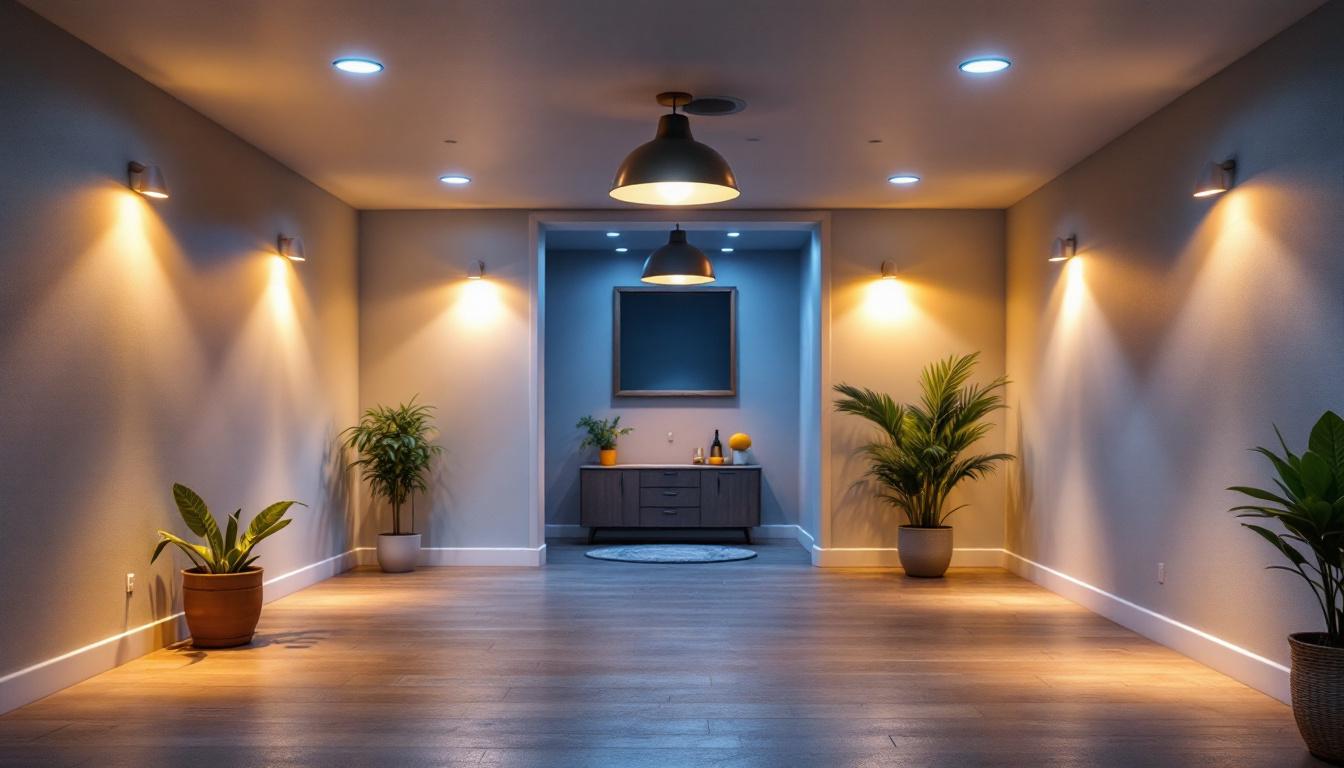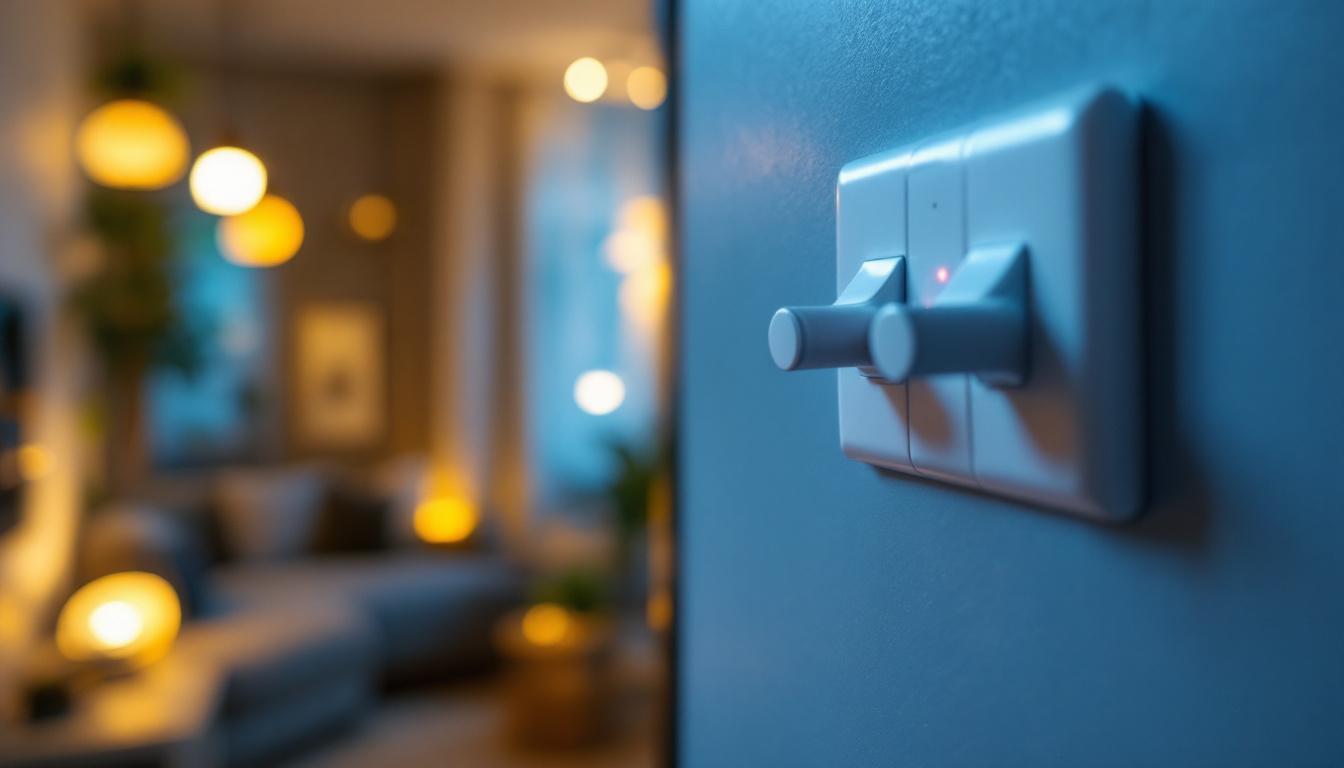
Recessed LED can lights have become a staple in modern lighting design, offering versatility, energy efficiency, and aesthetic appeal. For lighting contractors, understanding the nuances of these fixtures is essential for successful installations and satisfied clients. This article delves into four key types of recessed LED can lights, highlighting their features, benefits, and considerations for contractors.
Standard recessed LED can lights are the most common type used in residential and commercial applications. They are designed to be installed into the ceiling, providing a clean and unobtrusive lighting solution. Their sleek appearance allows them to blend seamlessly with various interior designs, making them a popular choice for modern homes and offices alike. As a result, they not only serve a functional purpose but also contribute to the overall aesthetic of a space.
These fixtures typically come in various sizes, including 4-inch, 6-inch, and 8-inch diameters, allowing for flexibility in design. They often feature adjustable brightness levels and color temperature options, ranging from warm white to cool daylight. Many standard recessed LED can lights also come with dimmable capabilities, enhancing their versatility for different settings. Some advanced models even offer smart technology integration, allowing users to control lighting through mobile apps or voice commands, making them an ideal choice for tech-savvy homeowners.
When installing standard recessed LED can lights, contractors should consider the ceiling height and the spacing between fixtures. A general rule of thumb is to space the lights approximately 4 to 6 feet apart for optimal illumination. Additionally, ensure that the fixtures are compatible with the ceiling type, whether it be drywall, plaster, or a drop ceiling. It’s also crucial to take into account the insulation in the ceiling, as certain fixtures are rated for contact with insulation, while others require a specific clearance to prevent overheating. Proper installation not only enhances the lighting effect but also ensures safety and compliance with local building codes.
One of the most significant advantages of standard recessed LED can lights is their energy efficiency. Compared to traditional incandescent bulbs, LED lights consume significantly less energy and have a much longer lifespan, often exceeding 25,000 hours. This not only reduces energy costs for clients but also minimizes maintenance and replacement frequency. Furthermore, many LED options are designed to be environmentally friendly, containing no hazardous materials like mercury, which is commonly found in fluorescent bulbs. This eco-conscious aspect appeals to many consumers who are looking to reduce their carbon footprint while enjoying high-quality lighting solutions.
In addition to their energy-saving benefits, standard recessed LED can lights can also enhance the ambiance of a space. By strategically placing these fixtures, homeowners can create layers of light, which can highlight architectural features, artwork, or specific areas within a room. This versatility allows for personalized lighting designs that can shift from bright and functional to soft and inviting, depending on the occasion. As such, they are an excellent choice for both everyday living and special events, making them a staple in contemporary lighting design.
Adjustable recessed LED can lights offer a unique feature that allows contractors to direct light where it is needed most. This flexibility makes them ideal for highlighting artwork, architectural features, or specific areas within a room. The ability to customize lighting not only enhances the aesthetic appeal but also contributes to the functionality of the space, making it more versatile for various activities and moods.
These fixtures typically feature a gimbal or swivel design, enabling the light source to pivot and tilt. This adjustability allows for precise lighting control and can enhance the overall ambiance of a space. Many adjustable recessed lights also come with various beam angles, allowing contractors to choose the most suitable option for the intended application. Furthermore, advancements in LED technology have led to options that include color temperature adjustments, enabling users to switch between warm and cool light settings to suit different times of day or specific events.
Adjustable recessed LED can lights are particularly popular in residential settings, such as living rooms and kitchens, where highlighting specific areas can create a warm and inviting atmosphere. In commercial environments, they are often used in galleries, retail spaces, and offices to draw attention to products or features. For instance, in a restaurant, these lights can be strategically placed to illuminate dining areas while creating a cozy, intimate setting. Additionally, in home theaters, adjustable recessed lights can be directed to enhance the viewing experience without causing glare on screens.
When installing adjustable recessed LED can lights, it is crucial to consider the angle and direction of the light. Proper positioning can significantly impact the effectiveness of the lighting. Additionally, ensure that the fixtures are securely mounted to avoid any movement after installation, which could affect the lighting direction. It is also advisable to plan the layout in advance, taking into account the room’s architecture and the placement of furniture, to achieve a balanced and harmonious lighting scheme. Using a dimmer switch can further enhance the versatility of these fixtures, allowing for adjustments based on the time of day or the desired mood.
The rise of smart home technology has led to the development of smart recessed LED can lights, which offer enhanced control and customization options for users. These fixtures can be integrated into home automation systems, allowing for seamless operation through smartphones or voice commands. This innovation not only modernizes the lighting experience but also aligns with the growing trend of energy-efficient solutions that are both functional and aesthetically pleasing.
Smart recessed LED can lights typically feature Wi-Fi or Bluetooth connectivity, enabling users to control them remotely. Many models allow for scheduling, dimming, and color changing, providing users with a high level of customization. Some advanced options even include integration with smart assistants, such as Amazon Alexa or Google Assistant. This means that users can adjust their lighting with simple voice commands, making it easier than ever to create the perfect atmosphere for any occasion, whether it’s a cozy movie night or a vibrant gathering with friends.
For clients, the benefits of smart recessed LED can lights are numerous. They provide convenience, energy savings, and enhanced security through features like remote access and scheduling. Additionally, the ability to customize lighting settings can improve the overall ambiance of a space, catering to different moods or occasions. Beyond aesthetics, these lights can also contribute to a healthier living environment by allowing users to simulate natural light patterns, which can positively impact mood and productivity throughout the day.
Installing smart recessed LED can lights requires careful attention to the home’s existing wiring and network capabilities. Contractors should ensure that the Wi-Fi signal is strong in the installation area and that the fixtures are compatible with the chosen smart home system. Providing clients with clear instructions on setup and operation can also enhance their experience. Furthermore, it’s essential to consider the placement of these lights; strategic positioning can maximize their effectiveness, ensuring that they not only illuminate the space but also highlight architectural features or artwork, adding depth and character to the overall design.
As technology continues to evolve, the future of smart recessed LED can lights looks promising. Innovations such as adaptive lighting, which adjusts automatically based on the time of day or occupancy, are on the horizon. Additionally, advancements in energy efficiency and sustainability are leading manufacturers to explore materials and designs that minimize environmental impact while maximizing performance. Clients can look forward to even more intuitive features, such as integration with home security systems that can trigger lighting changes in response to motion detection, further enhancing safety and peace of mind.
Retrofit recessed LED can lights are designed to replace existing incandescent or fluorescent fixtures, providing an energy-efficient upgrade without the need for extensive remodeling. These fixtures are an excellent solution for contractors looking to modernize older lighting systems.
One of the primary advantages of retrofit recessed LED can lights is their ease of installation. They typically come with a simple retrofit kit that allows for quick and straightforward replacement of existing bulbs or fixtures. This can save both time and labor costs for contractors, making it a cost-effective solution for clients.
By replacing outdated lighting with retrofit LED options, clients can significantly reduce their energy consumption. LEDs use up to 80% less energy than traditional lighting solutions, leading to lower electricity bills and a reduced carbon footprint. This aspect is particularly appealing for environmentally conscious clients.
While retrofitting offers numerous benefits, contractors should be aware of potential challenges. It is essential to assess the compatibility of the existing fixtures and ensure that the retrofit options fit properly. Additionally, some older fixtures may require modifications to accommodate the new LED technology, which could impact installation time and costs.
Recessed LED can lights provide a versatile and energy-efficient lighting solution for various applications. Understanding the different types of recessed LED fixtures available allows lighting contractors to make informed decisions that meet the needs of their clients. From standard and adjustable options to smart and retrofit designs, each type offers unique benefits that can enhance any space.
By staying informed about the latest trends and technologies in recessed LED lighting, contractors can provide exceptional service and solutions that not only meet but exceed client expectations. As the demand for energy-efficient and customizable lighting continues to grow, embracing these innovations will be key to success in the lighting industry.
Ready to elevate your lighting installations with the best in the business? Look no further than LumenWholesale for a comprehensive range of recessed LED can lights that promise quality, affordability, and convenience. As a dedicated partner to lighting contractors, we offer spec-grade lighting products at unbeatable wholesale prices, ensuring you get the most value for your investment. With free shipping on bulk orders and no hidden fees, LumenWholesale is your go-to source for premium lighting solutions that meet the highest industry standards. Don’t compromise on quality or cost—explore our selection today and experience Wholesale Lighting at the Best Value.

Discover the essentials of the wire pull tool in just five minutes with our comprehensive guide tailored for lighting contractors.

Discover the ultimate guide to LED Tube Lamps T8 for lighting contractors, highlighting benefits like energy savings up to 50%, installation tips, and industry insights—boost your projects today!.

Discover essential tips and strategies for lighting contractors to effectively illuminate unfinished basements.

Unlock the secrets of the light 3-way switch with our in-depth guide tailored for lighting contractors.